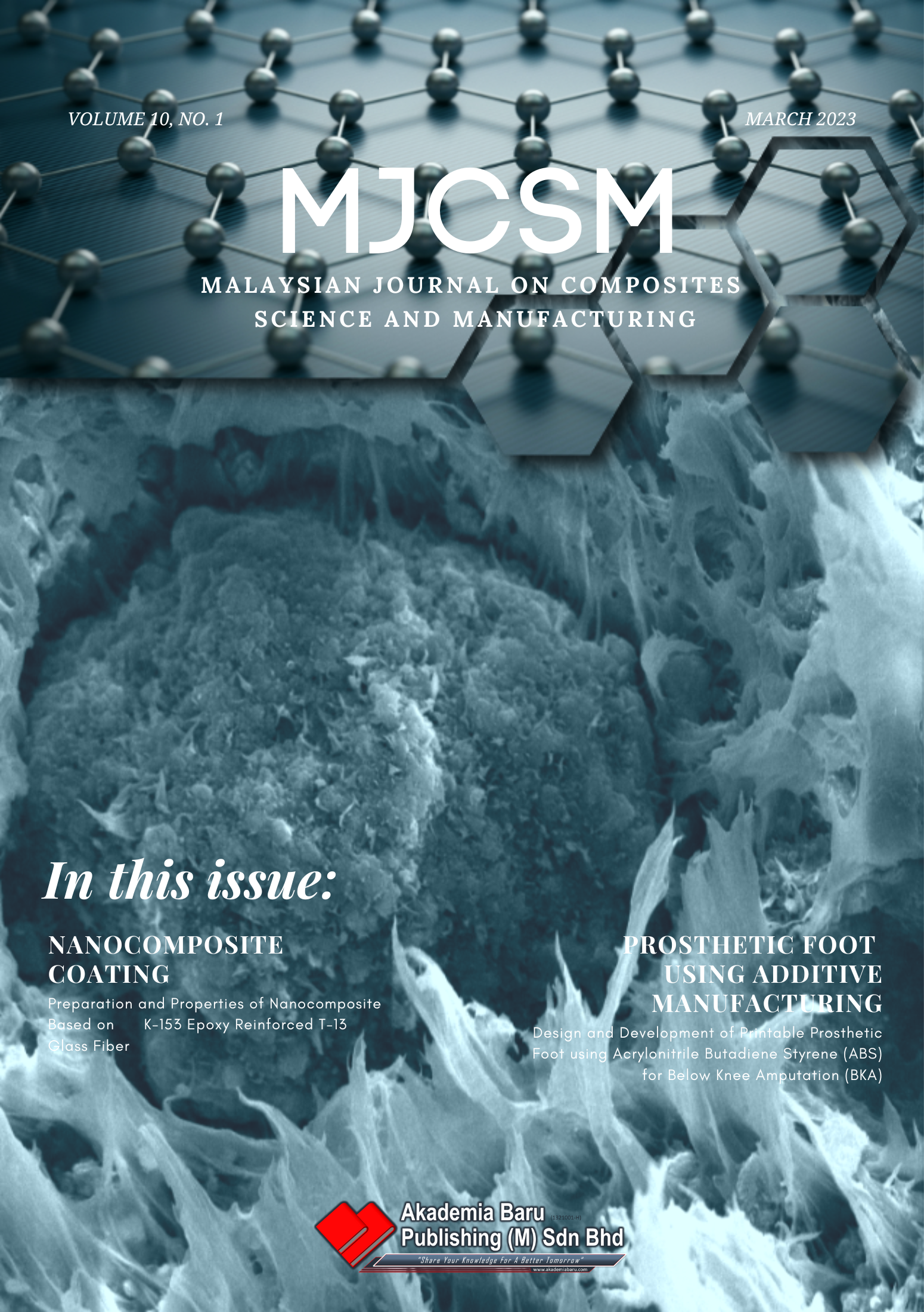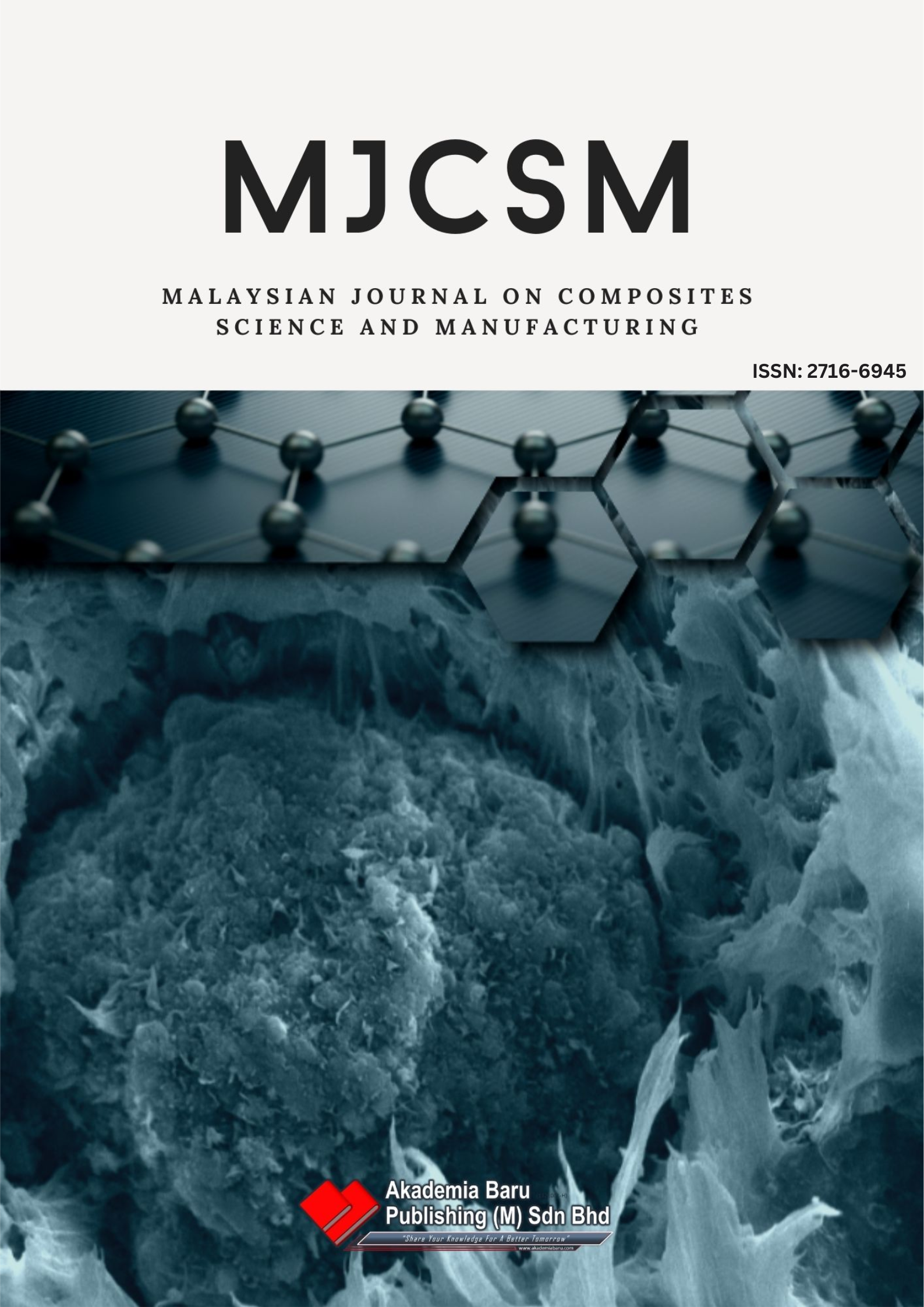Preparation and Properties of Nanocomposite Based on K-153 Epoxy Reinforced T-13 Glass Fiber
DOI:
https://doi.org/10.37934/mjcsm.10.1.110Keywords:
Polymer composite, Nanocomposite, K-153 epoxy, Nanosilica, T-13 glass fiberAbstract
This study aims to investigate the influence of nanosilica content and the ratio of glass fiber/epoxy resin on the mechanical properties of nanocomposites based on K-153 epoxy resin (K-153) matrix reinforced by T-13 glass fiber (T-13). Thermogravimetric Analysis (TGA), Field Emission Scanning Electron Microscopy (FESEM) and Energy Dispersive X-Ray Analysis (EDX) were used to examine the results of the investigations. The findings showed that the nanosilica of 1.20 weight percent (wt.%) was suitable for making K-153/T-13/nanosilica nanocomposites. Compared to K-153/T-13 polymer composites, K-153/T-13/nanosilica nanocomposites with nanosilica content of 0- 1.2 wt.% and the ratio of T-13 glass fiber/K-153 epoxy resin at 70/30 wt.%, the tensile strength had increased from 215.41 MPa to 313.12 MPa and from 230.96 MPa to 325.35 MPa for flexural strength. Besides that, the thermal resistance of nanocomposites also increases compared to that of polymer composites based on K-153 epoxy resin. At 500 °C, the weight loss of nanocomposites and polymer composites was 34.01 % and 37.67 %, respectively.
Downloads












